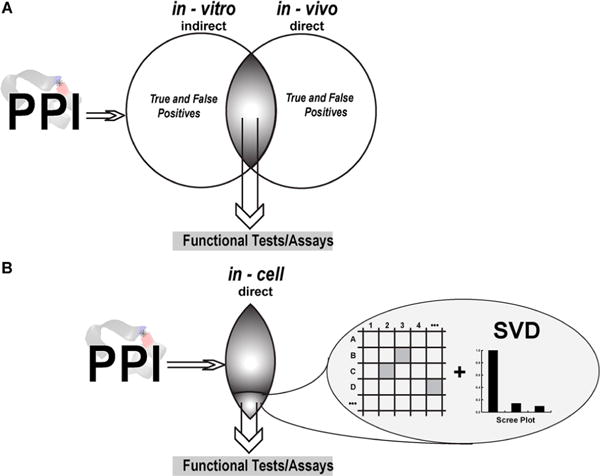Figure 1.

High throughput screening using in-cell NMR. (A) Screening for compounds that disrupt protein–protein interactions (PPIs) in vitro and in vivo produces hits with positive or negative responses. (B) Examining PPI targets by using in-cell NMR simultaneously affords the benefits of both in vitro and in vivo studies by providing amino acid residue specific information while the system remains in a physiologically relevant environment. Spectral data are analyzed by singular value decomposition (SVD) to ensure that the observed changes are real and not a result of an altered cellular environment.
